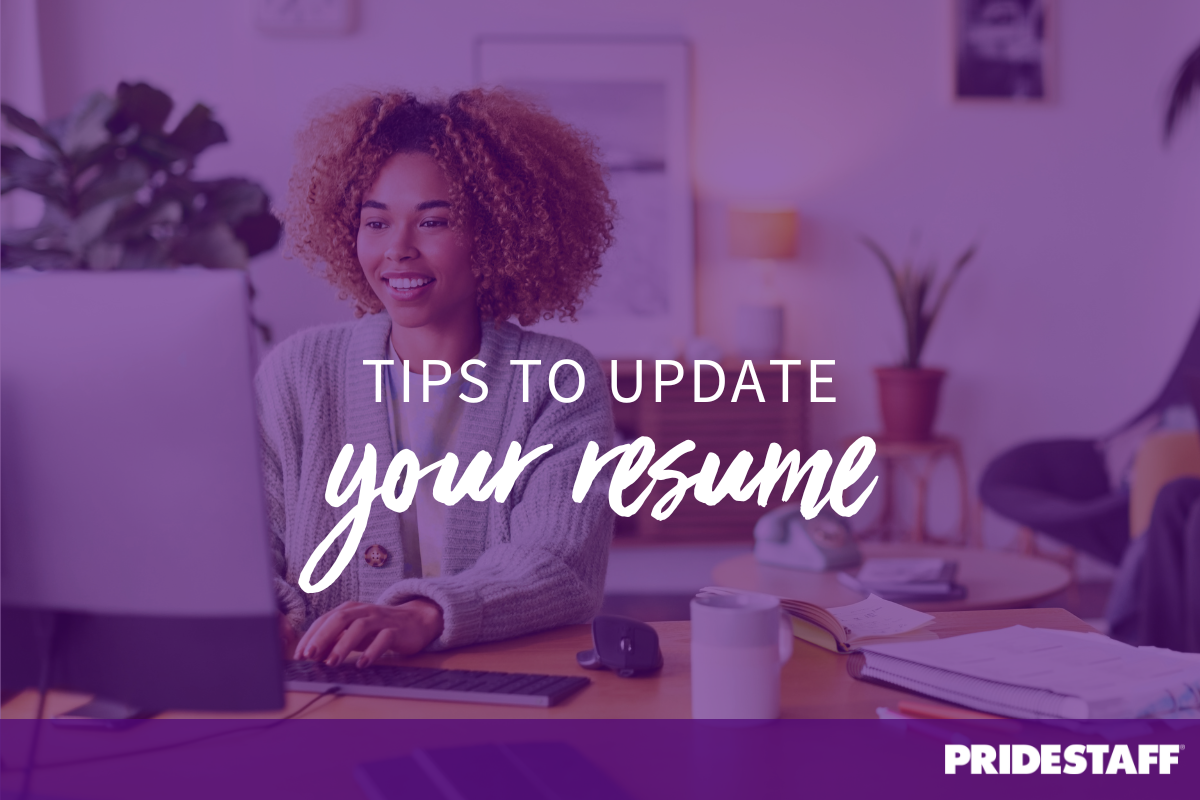Is Your Resume in Need of an Update?

COVID-19 layoffs. The rise of remote work. The Great Resignation.
It’s been an eventful few years for workers, and the job search landscape is much different than it was pre-2020. Many job seekers sit down to update their resumes and are unsure how to stand out from the competition—especially if they have COVID-19-related employment gaps.
Here’s the good news: a stand-out resume doesn’t only chronicle your work history; it also shows how your skills and experience qualify you for success in your desired role. With a bit of thought and effort, you can use the experience you’ve gained over the last few years—even if it wasn’t employment experience—to land a great job.
Here are 4 top tips for creating a resume that will capture a hiring manager’s attention in today’s market:
Optimize your resume for artificial intelligence.
Most large employers use applicant tracking system software to manage resume submissions. In many cases, your resume will have to make it past a computer before it gets to a recruiter or a hiring manager. Here’s how to optimize your resume for artificial intelligence:
- Keep it visually simple. Avoid the use of complicated fonts or complex graphics.
- Use an online program to check spelling and grammar. For extra certainty, ask a friend or trusted colleague to review your work.
- Use keywords. Recruiters and hiring managers often select keywords relevant to the position and use them to write the job posting. Identify those words and incorporate them into your resume. Get as close as you can to the language of the job description without sounding like a robot yourself.
Less is more.
In the past few years, recruiters and hiring managers have been through a lot. They’re tired, and their attention spans are short. Make it as easy as possible for them to recognize your skills, experience, and suitability for the role by crafting an easy-to-read resume.
- Choose a simple layout.
- Use an easy-to-read font.
- Incorporate white space.
- Replace dense blocks of text with bullet points.
Show value.
Don’t just list job titles for your former roles. Create a bullet-pointed list of accomplishments that will resonate with the employer and reflect the skills necessary for the job. Choose action verbs that communicate achievement and, when possible, quantify results. Numbers are very compelling! If you can provide hard evidence of how you positively impacted productivity, morale, or culture, do so. For example:
- Increased annual revenue by 28%.
- Spearheaded a voluntary teambuilding exercise with 90% participation.
- Increased billable hours from 60% to 70% while working remotely.
Include soft skills.
Let’s face it: the economy is uncertain right now, and no one knows what the next few months will bring. Employers may need to focus on doing more with less and will value versatile candidates who are aware of the soft skills they bring to the organization. Have the past few years helped you develop resilience, adaptability, teamwork, or leadership skills? Think about personality traits, behaviors, and interpersonal skills that add value to your on-the-job performance and weave them into your skills and experience sections.
Looking to launch your job search with an improved resume?
Our friendly recruiters can help you update your resume, practice your interview technique, and help you find success in your chosen field. Contact the PrideStaff office in your area to learn more about great local job opportunities.
Related Posts



